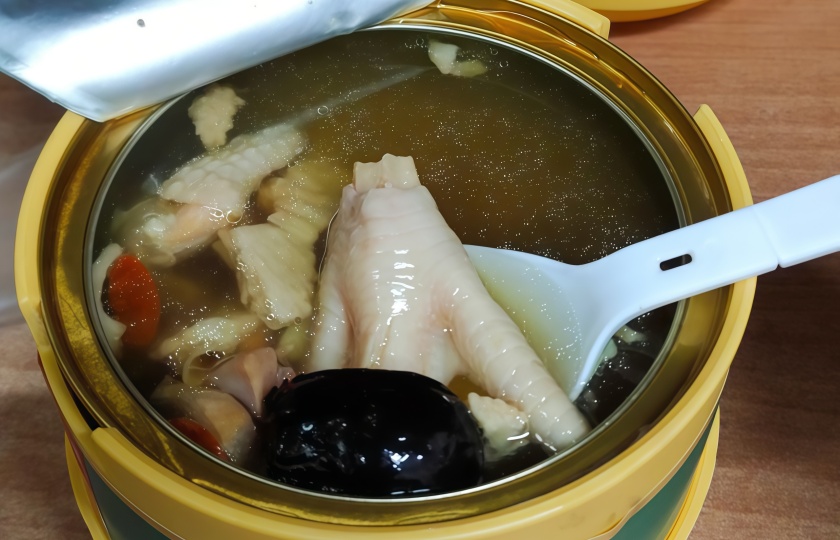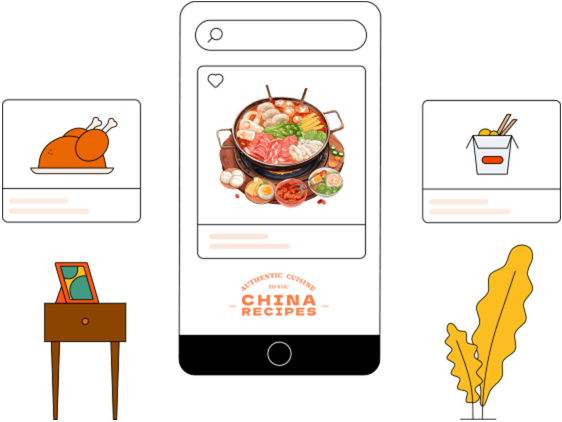How Many Cups In A Can Of Chicken Broth: Recipe Convert

How many cups are in a typical can of chicken broth?
Typically, commercially available canned chicken broth comes in two common sizes:
Standard can (14.5 ounces / approximately 411 grams) is approximately 1¾ cups (around 414 ml)
Concentrated soup can (10.5 ounces / approximately 298 grams) is approximately 1¼ cups (around 295 ml), but it can reach 2 cups after adding water according to the packaging instructions.
In actual use, it is recommended to directly check the net liquid content (fl oz) on the can label. 1 fluid ounce is approximately 30 ml, and 1 cup is equal to 240 ml. For example, for a can labeled 14.5 fl oz, calculate directly: 14.5×30 = 435 ml, and then divide by 240 ml, which is approximately 1.8 cups.
If you only have a measuring cup on hand, you can pour the contents of the can into the measuring cup for an actual measurement. Note that the concentrated soup base will be less in volume than regular chicken broth, and the total amount will increase after dilution.
How do you measure chicken broth without cups?
Calculate with tablespoons or spoons
A full scoop of an ordinary porcelain soup spoon is about 15 milliliters. Sixteen scoops are close to 1 cup (240 milliliters). If you need half a cup, just scoop 8 times.
Refer to the capacity of beverage bottles
A small bottled mineral water is usually 500 milliliters, which is approximately equal to 2 cups. Pour out half, and that's 1 cup. It's very convenient to use for comparison.
Pour in proportion according to the total package capacity
For example, if a can of chicken broth is 400 milliliters in total, and you want to take 200 milliliters, just pour out half. After shaking it evenly, pour it vertically, and it's easier to control the amount.
It's even simpler if you have an electronic scale at hand
1 cup is approximately 240 grams. Just weigh it directly. For example, if a recipe calls for half a cup, weigh 120 grams of chicken broth and pour it in.

How many servings in a can of chicken broth?
Calculated as soup
If used as a basic soup base, 1 can is approximately 3 - 4 servings (200 ml per serving)
For example, when making Japanese chawanmushi, using half a cup for each of the 4 custards will exactly use up 1 can
Calculated for stewed dishes
For stewing vegetables that absorb a lot of soup, like potatoes and carrots, 1 can is approximately 2 servings
For example, when braising teriyaki chicken legs, for a portion for two people, the whole can is needed
Pay attention to concentrated soup cans
The "4 servings" indicated on a 10.5 - ounce concentrated can is the amount after dilution
In actual cooking, it is recommended:
Pour out all the contents of the can
Add 1.5 times the amount of water according to the packaging instructions
The total amount is approximately 5 cups, enough for 4 servings of miso soup
A useful tip: Use the can as a measuring tool. For example, if a recipe calls for "2 cups of stock", just fill the can to about 3/4 of its height (for a standard can, filling to about 1 cm from the rim is approximately 2 cups). If you can't finish it when storing, pour the remaining soup into an ice cube tray and freeze it into cubes. Each cube is approximately 1/4 cup, and you can use them as needed next time.
What is the difference between low-sodium and regular chicken broth?
The salt content differs by nearly half.
The sodium content in regular chicken broth is about 700 - 900 milligrams per cup, while that in the low - sodium version is usually reduced to less than 400 milligrams. If the packaging says "reduced sodium", it generally has at least 25% less sodium than the original.
The flavor needs to be compensated with other seasonings.
After reducing the salt, the taste is likely to be dull. Some brands will add more herbs, onion powder or celery extract to enhance the flavor. When using the low - sodium version for home cooking, it's safer to taste the dish before serving and then add salt if necessary.
Regular chicken broth is suitable for occasions when you're short on time and don't want to season much, for example, using it directly as a soup base for cooking noodles. The two types can be used interchangeably, but be careful to adjust the saltiness of other seasonings.

Can I freeze leftover chicken broth from a can?
Sure! Here are some practical storage methods:
Portioning Tips
Pour the broth into a silicone ice cube tray to freeze into small pieces. Each piece is about 1 tablespoon. After they are frozen hard, transfer them to a sealed bag. When cooking noodles, you can just grab a few pieces and throw them directly into the pot, which is more convenient than thawing the whole container.
Secret to Prevent Expansion
When using a plastic container to store the broth, fill it no more than 80% full. Before tightly closing the lid, lay a piece of plastic wrap on top to isolate the air. Glass jars are prone to cracking when frozen, so it is recommended to use soft, freezer - safe sealed bags.
Handling Concentrated Soup Base
Concentrated chicken broth that has not been diluted with water is more suitable for freezing. Adding the full amount of water in proportion before freezing is likely to cause layering. When using it, directly take out the concentrated ice cubes and add water when heating for more reliable results.
Duration of Freezer Storage
Regular chicken broth can be stored in the freezer for 3 months. For low - sodium chicken broth, it is recommended to use it up within 2 months.
Can I substitute water for chicken broth in a recipe?
You can definitely substitute water for chicken broth, but you need to adjust the flavor - enhancing methods according to the types of dishes. Here are several common scenarios:
When substituting in cooking rice or stewing congee
It is recommended to add 1/4 teaspoon of salt and a few drops of sesame oil to each cup of water to mimic the base flavor of chicken broth. If you have dried shiitake mushrooms on hand, tear a small piece, soak it until softened, and then cook it together with the soaking water. This can significantly enhance the umami flavor.
When stir - frying and thickening is required
When substituting with water, drizzle half a teaspoon of oyster sauce or half a spoonful of mirin before taking the dish out of the pan. For example, when making teriyaki chicken, adding a little brown sugar during the sauce - reducing stage can balance the blandness.
When making soups, this is most affected
The soup base made with plain water will be weak. You can add a few slices of apple or white radish and cook them together. The natural fructose of the apple can imitate the sweetness of chicken broth. Just take out the apple slices after cooking for 20 minutes.
For baking recipes
For example, in a chicken pie, if you substitute with water, add more fried onion powder and garlic powder to the filling. Or mix in 1 teaspoon of milk powder. The creamy aroma can make up for the lack of richness.























